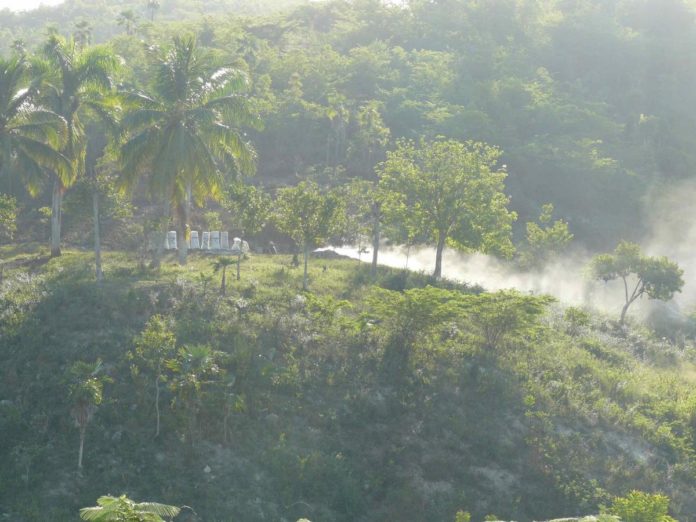Peru, Paraguay, and Mexico will join six other countries in Latin America by forming Local Technical Agroclimatic Committees (LTACs). These reduce climate risk in the agricultural sector and increase the resilience of farmers against climate variability.
If your fields rely on rainfall – which is the case for the vast majority of smallholder farmers in Latin America – access to reliable information on the start of the rainy season is essential. Sowing at the right time can make the difference between a bumper harvest and crop failure, and once-reliable traditional sowing times have been upended by climate change. Access to climate information is more important now than ever for these producers.
Local Technical Agroclimatic Committees (LTACs), which are an initiative of the CGIAR Research Program on Climate Change, Agriculture and Food Security (CCAFS), are streamlining the flow of information climate information to smallholders across Latin America. This is just one example of how LTACs are working to make farmers more resilient and prosperous in spite of climate change.
Farmers from Guatemala, Honduras, Colombia, Nicaragua, Chile, Panama, El Salvador and more recently, Peru, Paraguay and soon Mexico, have benefited from agro-climatic information at the local level to prepare their crops such as corn, rice, beans, coffee, fruits, vegetables, and cattle. In total, Latin America has more than 35 LTACs in optimal operation in nine countries, reaching more than 500 thousand farmers.
How LTACs work.
LTACs are designed to give farmers and local communities greater power to make informed decisions about how to best manage their agricultural production in a time of climate change. The committees bring together farmer organizations, scientists, local officials, and other stakeholders to share and discuss climate information.
Based on this, they can decide what crops to plant, when to plant, how to manage their fields based on climate forecasts for the growing season. They can also decide what other climate-smart agriculture practices they can implement based on relevant climate and crop information.
This article in the journal Climate Risk Management by Ana María Loboguerrero and Deissy Martínez, among others, at the International Center for Tropical Agriculture, explains the successes of LTACs in greater detail.
“The basic premise behind the LTAC approach is: If farmers and the local rural community at large can access and understand weather and climate forecasts and the responses of their crop production, processing, and marketing options under local conditions, they can make better decisions on how to manage their farms and businesses,” they write.
LTACs produce widely distributed agro-climatic bulletins that include climate predictions straightforward explanations of the impact forecasts have on rain-fed crops.
“LTACs have become a vital tool to reduce climate risk because farmers and authorities know the climate forecast they could reduce the risk of disasters in agriculture, prevent new disasters, increase resilience, and reduce losses,” said Martínez.
New in Paraguay, Peru, and Mexico.
In September 2019, the first LTAC of Paraguay was launched in the department of Itapúa. Participants included the Ministry of Agriculture and Livestock, the National Office of Meteorology and Hydrology, the National University of Itapúa, government officials and associations of producers, technicians, among others.
A second LTAC was also established in San Juan Misiones, Paraguay.
Mexico, for its part, is in the early stages of building an LTAC in the state of Chiapas. In November, CCAFS-CIAT researchers met with officials of the National Meteorological Service of Mexico to share research and experience in climate forecasts and climate services in Latin America. The Chiapas LTAC is expected to be established next year.
Peru launched its Agro-climatic Management Platform as part of its National Competitiveness and Productivity Plan. This platform aims to become an agro-climatic governance space that provides timely and effective information to generate capacities in the agricultural sector to respond to climatic events in 12 regions prioritized because of its vulnerability to climatic events.








